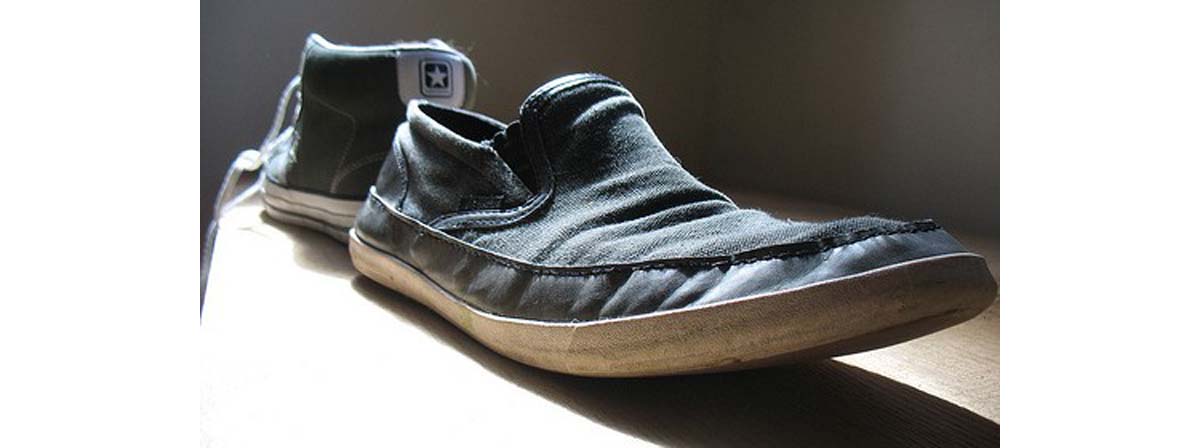Table of Contents
You know those rubber clogs with holes in the top and strap around the back that are sold as being healthy for feet? Well I’m sorry to have to tell you, but they’re not.

Aren’t flat shoes the best ones to wear?
Compared with high-heels of three inches or more, flat shoes are going to be better for our feet. But, as mentioned for flip-flops, completely flat shoes are not without harm. Many people find flat shoes uncomfortable because they cannot stretch their Achilles tendon sufficiently to bring the heel easily to the ground. This can lead to strain of the tendon, or adaptation of walking style to get around the problem.
One of these adaptations is seen in children with a ‘bouncy’ walk – they effectively walk on their toes because they cannot get their heels to the ground because of tight Achilles tendons. The other adaptation is to pronate the foot excessively, which is a rolling inwards motion which lowers the arch. It is a way of progressing the gait (walking) cycle without having to bring the heel into full contact with the ground. But it brings its own problems and can lead to foot, knee, and hip pain, among other things.
So the best heel height is one to two inches and many people feel much more comfortable at this height than in completely flat shoes.
And while much higher heels of three inches or more can cause problems if worn for long periods or regularly, the occasional outing in them is not a problem – we all have to live a little!
Many shoes are not supportive enough for daily wear
Finally, flip-flops, canvas shoes and ballet flats, offer no foot support whatsoever. Many of us have abnormalities of gait (walking) such as excessive pronation or supination, which lead to strain on our feet and joints. A supportive shoe, being stiff around the heel counter (the part of the shoe which encloses the heel) will help to counteract these abnormal movements of the foot.
This is one of the reasons that excessive wearing of slippers is also bad for us and older people especially should be encouraged to wear more supportive shoes in the house.
Among the most supportive shoes are sports sneakers or athletic shoes, as they are designed to support the foot during the rigors of athletic performance. Good quality ones have a very stiff heel counter – you should find it hard to squeeze the sides of the heel together between your fingers and thumb – and offer more shock-absorption than most shoes.
- Neale’s Disorders of the Foot. 8th Edition. Published by Churchill Livingstone, Edinburgh, UK
- Valmassy RL. Clinical Biomechanics of the Lower Extremities. Published by Mosby Inc., Missouri, USA
- Photo courtesy of wader by Flickr : www.flickr.com/photos/wader/2609367534/
- Photo courtesy of Drew Jacob by Flickr : www.flickr.com/photos/roguepriest/6884032282/
- www.webmd.com/beauty/style/flip-flops-fun-but-not-great-for-feet
- www.webmd.com/pain-management/ss/slideshow-worst-shoes-for-your-feet
- www.scpod.org/media-centre/news-archive/high-heels-whahigh-heels-what-you-need-to-knowt-you-need-to-know

